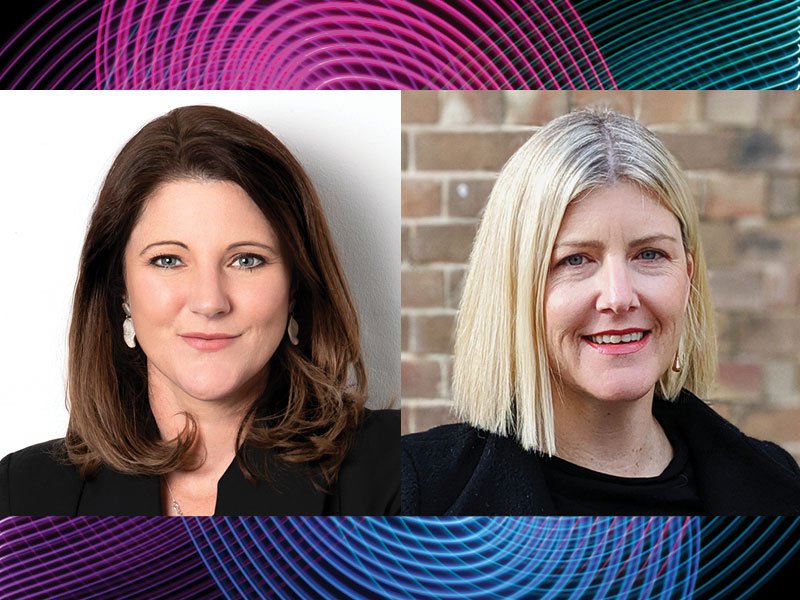Sally-Ann Williams is chief executive of Cicada Innovations, the nation’s leading deep tech incubator, “supporting visionary entrepreneurs as they commercialise research and turn ideas into businesses.” Cicada has been doing that for 20 years.
Bronwyn Le Grice is the CEO at ANDHealth, a commercialisation engine room for digital health, providing support programs for Australian digital health companies.
Both of these leaders share an optimism about the future that is common across the entrepreneur community. But they have a dim view of government funding of innovation in Australia, marking parts of it as simply “innovation theatre.”
They spelled out what they see as failures of innovation funding and offered suggestions for a different approach, in an InnovationAus Commercial Disco podcast.

Ms Le Grice says innovation achievements were assessed by inappropriate metrics, while those that reflected the real value of innovation were often ignored.
“We all need to look beyond things like metrics of numbers of startups and others we use to measure government funding programs,” Ms Le Grice said. “Innovation in deep tech, and health technology specifically, takes time.”
“So, when we look at supporting that innovation, we need to have a longer-term lens. It should not be about how many people attended the workshop we ran.
“It should be more about: how many companies have gone from two to 10 to 20, to 40 employees; how many people have achieved regulatory approval for their products in global markets; how many people are partnering with major corporates,” she said.
“Let’s start looking at the deep economic impacts of sustained innovation over a period of time. Let’s stop focusing on valuations over value, and talking about numbers of startups. Some of them might be one person, and it might be a side gig. And they may not actually ever get there.”
‘Deep tech’ was the focus of a report produced by Cicada Innovations, released in August 2020, Australia’s Deep Tech Opportunity.
Ms Williams dismissed the parameters commonly used to judge innovation as “vanity metrics”. She said the report aimed to assess ‘deep tech’ innovation according to ‘impact metrics’, “numbers that, when you look at them and unpack them have much more significance to people, the planet and prosperity.”
She said the report applied these value additive metrics. “We found that, for every dollar a deep tech company returns, there’s an extra $3 returned to customers, to business and society at large,” Ms Williams said.
“So the actual value of the business is not what it’s valued at, or what its profit line looks at, it’s actually its cost-saving into society.”
In a telling example she cited Cicada Innovations member, Loop+. It has developed an activity tracker for wheelchair users that continuously records the body’s seated movement and position to understand activities and risks.
“It helps people avoid complications like pressure sores. There’s a value of that company in terms of sales and raising capital and getting traction selling locally and overseas,” Ms Williams said.
“But treating people hospitalised with pressure sores costs the health system $2.2 billion every year.
“Where is that metric when we’re thinking about what we’re investing in, and what kind of programs we’re standing up? When we think about value, we have to redefine it.”
Ms Le Grice dismissed the government’s current innovation funding policy as having forgotten that innovation should be about sustained long-erm economic growth and international competitiveness.
“They should be funding programs with a proven track record of delivering impact. Like investors and entrepreneurs look for people who have done it before, government should be looking for people with a track record, and then say, ‘how do we take the skills and expertise in those people, like Cicada with a 20 years history of building amazing companies and deploy that model across multiple sectors?’”
Ms Williams said the government’s approach to funding innovation lacked long-term vision unlike most other developed nations.
“We need real vision about what we can be and what we should be as a society and really line up behind it, recognise it is where we want to go. But to get there is going to take sustained investment and sustained vision.
“Every other developed country has doubled down on science and technology and engineering-based businesses and investments in research,” Ms Williams said.
“Their multinationals and companies operating in the UK, in the EU, in the US are investing in research, development and in long term vision, because they know they need it for economic sustainability,. We are still so far behind on those things.”
Ms Le Grice proposed a solution: restructuring the co-operative research centre program that has been running for 20 years into a co-operative commercialisation centre program, modelled on ANDHealth.
“Why don’t we talk about cooperative commercialisation centres? We have a model for cooperative research that is proven. It brings together global corporates with universities, with smaller Australian service providers with large Australian players. We’ve got big to small companies wrapping themselves around digital health commercialisation.
“There is absolutely no reason why I can’t sit down with a team from a different sector and teach them how to create a non-profit, industry growth driven, cooperative commercialisation centre in their area of expertise.
“We’re still funding the same structure. If we want to change it, fund it differently. It’s really simple. The definition of insanity is doing the same thing and expecting different outcomes.”
Do you know more? Contact James Riley via Email.

Hear hear!!